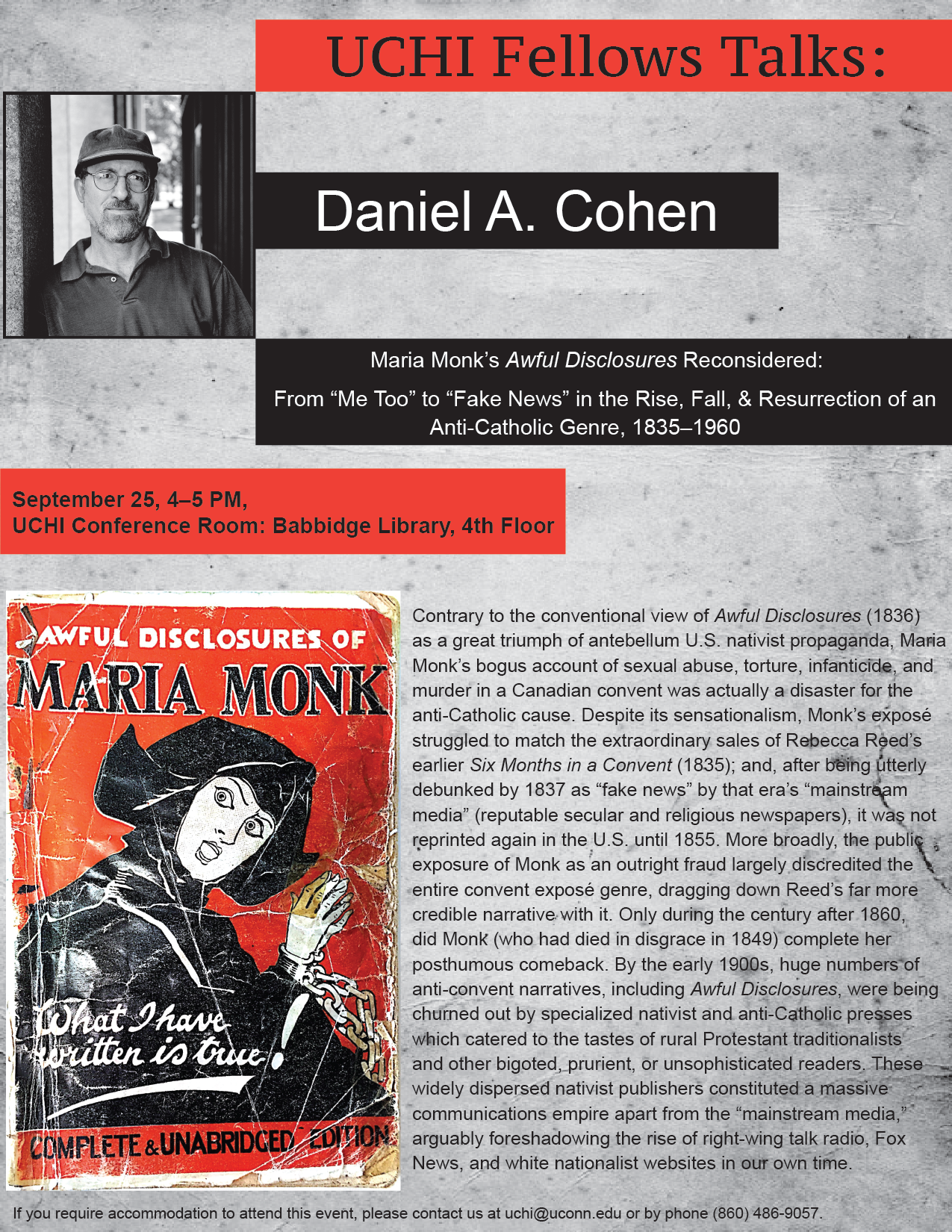Maria Monk’s Awful Disclosures Reconsidered:
From “Me Too” to “Fake News” in the Rise, Fall, and Resurrection of an Anti-Catholic Genre, 1845-1960
Daniel A. Cohen, Department of History, Case Western Reserve University
September 25, 2019 (UCHI Conference Room: Babbidge Library, 4th Floor)
Contrary to the conventional view of Awful Disclosures (1836) as a great triumph of antebellum U.S. nativist propaganda, Maria Monk’s bogus account of sexual abuse, torture, infanticide, and murder in a Canadian convent was actually a disaster for the anti-Catholic cause. Despite its sensationalism, Monk’s exposé struggled to match the extraordinary sales of Rebecca Reed’s earlier Six Months in a Convent (1835); and, after being utterly debunked in 1836–37 as “fake news” by that era’s “mainstream media” (reputable secular and religious newspapers), it was not reprinted again in the U.S. until 1855. More broadly, the public exposure of Maria Monk as an outright fraud largely discredited the entire convent exposé genre, dragging down Reed’s far more credible narrative with it. Only during the century after 1860, did Maria Monk (who had died in disgrace in 1849) complete her posthumous comeback. By the early 1900s, huge numbers of anti-convent narratives, including Awful Disclosures, were being churned out by specialized nativist and anti-Catholic presses based in such cultural backwaters as Aurora, Missouri, and Milan, Illinois, which catered to the tastes of rural Protestant traditionalists and other bigoted, prurient, or unsophisticated readers. These widely dispersed nativist publishers—at least one of whom also peddled stereopticons, slide shows, and even motion picture projectors—constituted a massive communications empire apart from the “mainstream media,” arguably foreshadowing the rise of right-wing talk radio, Fox News, and white nationalist websites in our own time.


